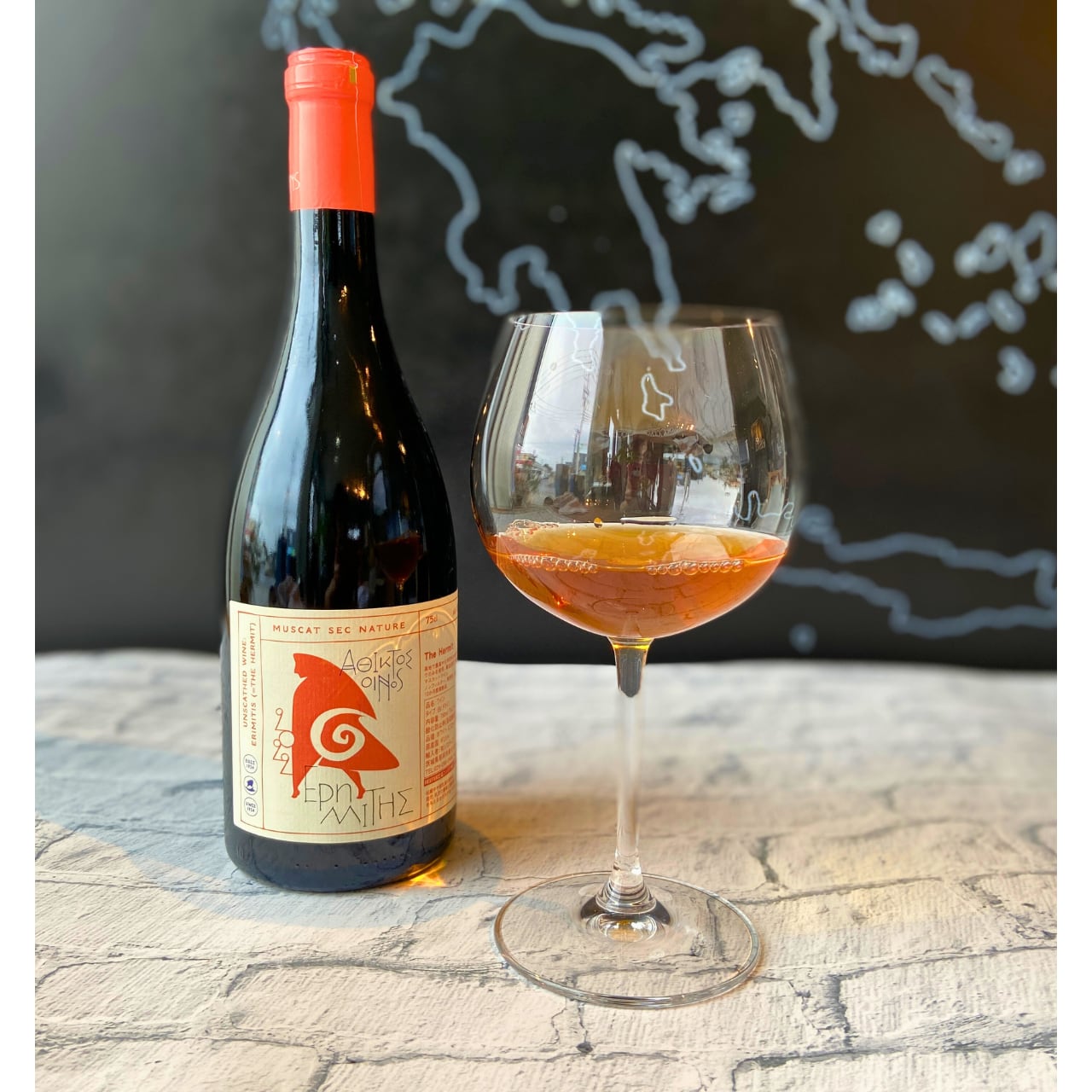The Hermit (Orange)
The Hermit (Orange)
Using : to pay next month
*Earliest delivery date is 12/12(Fri) (may require more days depending on delivery address).
*Tax included.
*Shipping fee is not included.More information
*Japan domestic shipping fees for purchases over ¥16,200 will be free.
Tasting Comment
The appearance is a pale amber.
The bouquet is expressive and layered, with honey, jasmine, and lily blossoms intertwined with nuances of dried lavender and apricot, creating a complex and deep impression.
On the palate, the acidity is gentle, giving a rounded softness and smooth texture.
True to its orange wine style, it shows pleasant tannins, while the lingering finish blends fruit and floral notes in
harmonious balance.
Acidity: ★★★☆☆ Fruitiness: ★★★★☆
General Information
Producer: United Winemaking Agricultural Cooperative of Samos
Origin: Samos
Grape Variety: White Muscat 100%
Style: Dry
Body: Medium body
Volume: 750 ml
Alcohol: 13.5%
Serving Temperature:15-18°C
Technical Information
Vinification: Fermented with natural yeasts in small, egg-shaped concrete tanks, then aged on the lees for 12–15 months.
Subsequently, the wine undergoes only a very short maturation in oak barrels before being bottled unfiltered.
Annual Production: 5,000 bottles
Average Yield: 5,000 kg/ha
Altitude: 600-700m
Vine Age: 50 years
Soil: Acidic, moisture-retentive yet well-drained soils of relatively low fertility.
UWC Samos
Located in the eastern Aegean, near the coast of Turkey, the island of Samos is home to the Union of Winemaking
Cooperatives of Samos (founded in 1934), which today brings together 2,200 individual growers dedicated to producing
high-quality wines from the White Muscat variety.
On the island, 98% of vineyards are planted with White Muscat, regarded as the noblest of all Muscat varieties cultivated worldwide.
The island’s distinctive terraced vineyards have existed for over 3,000 years, many of them situated on the slopes of
Mount Ambelos at altitudes of 900–1,100 meters. Passed down from generation to generation, these vineyards are
recognized by UNESCO as an element of the world’s Intangible Cultural Heritage.










